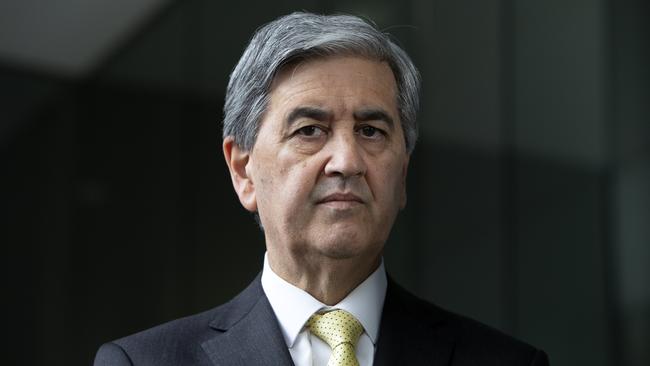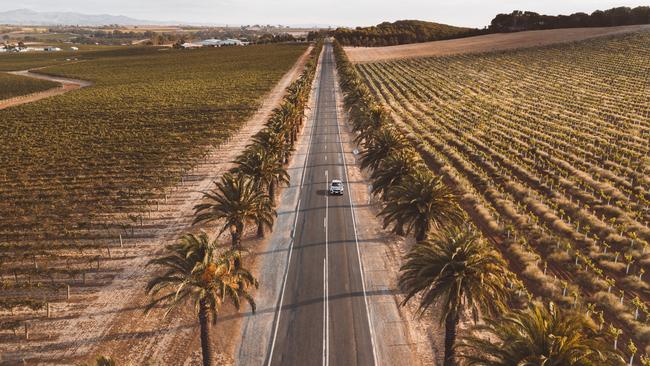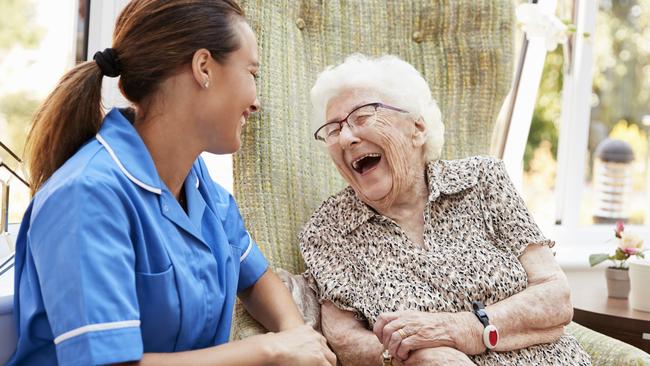Budget 21: 10 questions South Australia wants answered
Here’s the 10 burning questions South Australia wants answered in the 2021 Federal Budget – and some more of what we can expect.
SA News
Don't miss out on the headlines from SA News. Followed categories will be added to My News.
1) How big is South Australia’s slice of the GST?
Treasurer Rob Lucas says SA’s share of the GST will be bigger than expected after a $1.3bn hit in last year’s Federal Budget.
The state was set to get $5.606bn in 2020-21, down from the $6.907bn the State Government was expecting due to COVID-19’s hit to consumer spending.
Mr Lucas said the hit would be “not as big of a drop as we were anticipating”.
“We will still have less in South Australia than we were predicting back in the 2019-20 pre-COVID budget,” Mr Lucas said.
SA’s share will also fall to 9.2 per cent in 2021-22, from more than 10 per cent two years ago, due to this year’s Commonwealth Grants Commission’s distribution.

2) SA’s unemployment rate was the highest in the nation at 6.3 per cent in March. What will be in the Federal Budget to create jobs and get more people back into work?
A skills and training package is expected, along with a multibillion dollar infrastructure cash splash estimated to create 5000 jobs.
3) SA’s wait list and wait times for aged care at home are among the longest in the nation. What reforms will be funded?
An almost $18bn package to fund aged care reforms is tipped to be announced to tackle the major recommendations of the Aged Care Royal Commission. That called for abolishing the waiting list for home care packages, new oversight bodies, quality standards and a pricing body for fees, among 148 recommendations.
4) Will there be measures to help the wine industry and other sectors that have been targeted by China?
With the lucrative Chinese market expected to be closed for “a minimum of three to five years”, Australian Grape and Wine chief executive Tony Battaglene says the sector needs a funding boost to help wine companies diversify their market and boost market access.
“We know there is no single market, or collection of markets, that will ‘fill the China gap’, but that diversification of markets will be critical to the sector’s growth in the future.”

5) Domestic tourism has had a rebound, but parts of the industry are still suffering from closed international borders. What’s in the budget to boost them?
The half price flights scheme will be reviewed when it comes to an end, but it may not need to be renewed if the demand is already there, Finance Minister Simon Birmingham has said.
Tourism Industry Council SA boss Shaun de Bruyn said the government needed a plan to reboot international tourism once borders were open, and Tourism Australia’s domestic marketing needed to be “undertaken in a strategic manner that is understood by industry”.
6) Will there be changes to Australia’s migration system?
The State Government has called for an overhaul of the nation’s visa system to help rebuild the economy after Covid-19.
Business SA chief Martin Haese said changes were necessary to help the business sector.
“All financial imposts associated with sourcing necessary migrant workers, including the Skilling Australia Levy, need to be reviewed,” he said.

7) Will any other big infrastructure projects get funding?
It’s expected SA will get a multi-billion allocation for projects, including the next section of the North-South Corridor.
“Long-term infrastructure needs for regional development, including the Augusta and Dukes Highway duplication projects, need a firm funding commitment,” Mr Haese said.
8) What is in the budget for mental health?
A funding boost for mental health is expected but no details have been revealed as yet.
It’s an area of critical importance for SA, given the unprecedented demand for services.
9) What’s in the budget for women?
Superannuation is expected to be paid on parental leave to boost women’s retirement savings and economic security, while funding will be ramped up to tackle domestic violence.
10) HomeBuilder has driven huge demand for new homes in SA, creating jobs in the construction sector. What else will be in the budget to for housing?
A new Family Home Guarantee will create 10,000 loans for single parents to purchase a house with a deposit as low as 2 per cent.
$124.7 million will also go to boosting public housing stocks across the nation.
Master Builders SA boss Will Frogley said large-scale social infrastructure projects should be “commenced immediately and not put on priority lists”.
“We also want measures to encourage investment in smaller social infrastructure such as community facilities.
“The CommunityBuilder concept of small government grants uses the successful HomeBuilder model to achieve this.”
SACOSS chief executive Ross Womersley said the budget needed to boost social housing and increase rent assistance to reduce homelessness, as well as to launch a “major increase in the JobSeeker payment”.
Good growth will pay back massive debt
More than $30bn improvement in Australia’s budget bottom line will help fund a record cash splash to radically overhaul aged care.
South Australia’s slice of GST will also be bigger than expected when Treasurer Josh Frydenberg unveils the 2021 Federal Budget on Tuesday night.
Almost $18bn will be announced for major reforms to address key recommendations from the aged care royal commission, such as abolishing the waiting list for home care and boosting the workforce.
The aged-care funding will boost the “understaffed”, “underpaid” and “undertrained” workforce.

Australia’s gross debt is still expected to soar past $1 trillion in the wake of the COVID-19 pandemic.
But economists believe the nation’s faster than expected recovery and soaring iron ore prices will drive the budget deficit below $170bn this year and below $90bn next financial year.
That’s a rebound of almost $50bn on the $213bn deficit initially forecast for 2020-21 in the October Budget last year, and more than $30bn better than the $197.7bn deficit predicted at the mid-year Budget update in December.
With the extra tax revenue, Mr Frydenberg will reveal a jobs-focused Budget that aims to drive unemployment below 5 per cent, spark wage rises and grow Australia’s post-COVID economy to help pay down debt without “austerity” measures.
Big ticket items will include tax cuts of up to $1080 for low and middle income earners for another year, $1.7bn to reduce childcare costs for families with multiple kids, and 10,000 home loans to help single parents purchase a home with a 2 per cent deposit.
Superannuation will be paid on parental leave to boost women’s retirement savings and funding will be increased to tackle domestic violence.
A skills and training package will help thousands of Australians upskill or retrain, and $10bn will be committed to major infrastructure projects, including SA road upgrades such as a Truro bypass and the Augusta Highway duplication.
Retirees will get new measures to boost their superannuation, and small brewers and distillers will get tax breaks.
Finance Minister Simon Birmingham on Monday flagged the “once in a generation” boost for aged care would improve quality and safety, and increase places for residential and home care.
About 7500 South Australians were among more than 60,000 people waiting for a home care package nationwide as of December 31.
“We won’t magically solve every challenge the aged-care sector faces overnight, but it does comprehensively respond to the issues raised in the royal commission,” Senator Birmingham said.
A star rating system for aged-care providers to give families more transparency was one of 148 recommendations in the royal commission, along with abolishing the waiting list for home care.
Oakden whistleblower Stewart Johnston was sceptical the funding boost would fully address the problems.
Boosting the workforce was a key priority, along with creating more transparency on the quality of care and fees of providers, he said.
“It’s a very low paid job; we need to value and pay the workers a lot more than what we do currently,” he said.
Council on the Ageing chief executive Ian Yates said the waiting list for home care must be abolished permanently and a more effective assessment service should be launched, among the raft of changes.
He was “optimistic” the funding would address underlying problems in the sector, workforce challenges, and create incentives to improve nursing homes.
“We’ve seen too many patchwork exercises; this has the hallmarks of that not being the case,” Mr Yates said.
Chris Stewart, who runs Helping Hand which operates nine aged care facilities and six retirement villages across SA, said: “I think there’s going to be a lot of investment into the increased regulation and oversight of providers, because clearly there’s been substandard care that’s been highlighted by the royal commission.
“Providers need to keep lifting the bar around their performance ... quality of care.”
AMP Capital chief economist Shane Oliver predicted a “substantially improved” debt and deficit picture compared with last year, with a deficit as low as $155bn this year and $65-$70bn next year.
“The numbers look horrendous compared to what was expected pre-pandemic, but they’re looking a lot healthier than they were six months ago,” he said.
He backed the government’s plan to delay “austerity measures” but said there were some “fairly risky” measures such as helping single parents into the housing market with only a 2 per cent deposit.


